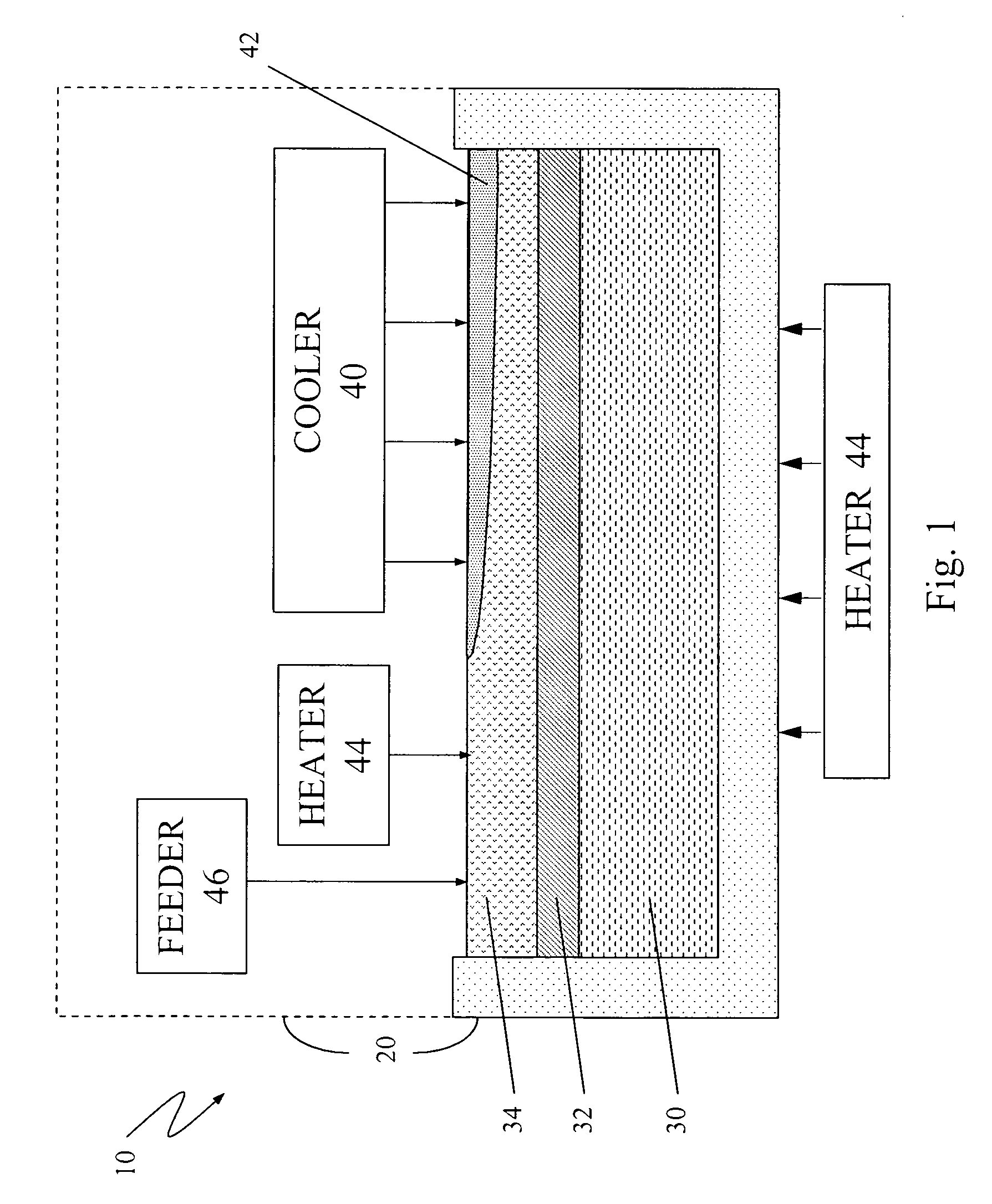Methods for casting by a float process and associated apparatuses
a float process and float technology, applied in the direction of sustainable manufacturing/processing, silicon compound, final product manufacturing, etc., can solve the problems of difficult process scaling up, energy and capital intensive solar cells from single and multi-crystalline ingots of high purity silicon, and the process of wafer making is still largely inefficient, etc., to achieve rapid scale-up, high rate, and high efficiency
- Summary
- Abstract
- Description
- Claims
- Application Information
AI Technical Summary
Benefits of technology
Problems solved by technology
Method used
Image
Examples
Embodiment Construction
[0042]1. The Invention
[0043]1.1 The Invention Generally
[0044]The present invention will generally be described in terms of manufacturing Silicon sheets suitable for solar cells by floating molten Silicon over “molten state substrate(s)” that comprises of high-density molten metals / alloys and silicate slags. However, the present invention has other applications and may be used, for example, with materials other than Silicon and the present invention may be used, for example, to make apparatuses other than solar cells. The present invention includes many modifications and variations, and the specific descriptions and embodiments provided herein are illustrative of the present invention and not limiting.
[0045]FIG. 1 illustrates one embodiment of an apparatus 10 according to the present invention. In that embodiment, the apparatus 10 includes a container 20 including first 30, second 32, and third 34 liquid layers. The present invention may also include a cooler 40, a heater 44, and a f...
PUM
| Property | Measurement | Unit |
|---|---|---|
| weight percent | aaaaa | aaaaa |
| thick | aaaaa | aaaaa |
| grain size | aaaaa | aaaaa |
Abstract
Description
Claims
Application Information
 Login to View More
Login to View More - R&D
- Intellectual Property
- Life Sciences
- Materials
- Tech Scout
- Unparalleled Data Quality
- Higher Quality Content
- 60% Fewer Hallucinations
Browse by: Latest US Patents, China's latest patents, Technical Efficacy Thesaurus, Application Domain, Technology Topic, Popular Technical Reports.
© 2025 PatSnap. All rights reserved.Legal|Privacy policy|Modern Slavery Act Transparency Statement|Sitemap|About US| Contact US: help@patsnap.com



